Wading Birds, Shorebirds, and Waterfowl in Rice Fields of the Everglades Agricultural Area
Authors
Sara E. Townsend, Elise V. Pearlstine, Frank J. Mazzotti, Michelle L. Casler, Wendy M. Bear and Chris W. Deren
Objectives
- Compile a species checklist of waterbirds in rice fields of the EAA.
- Identify patterns in abundance or richness.
- Identify spatial and temporal variables correlated with these patterns.
- Evaluate activity and microhabitat preference.
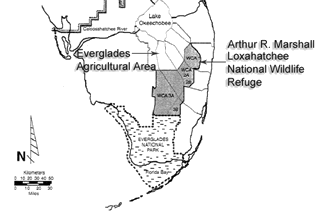
Methods
- We conducted 300 surveys in 14 fields including road, edge, ditch and dike microhabitats. The counts were for 10 minutes and included the entire field where possible.
- We analyzed species abundance and richness, microhabitat use and behavior. For the fields we tracked cultivation phase and rice height and we also recorded weather. We grouped birds by guild for some analyses.
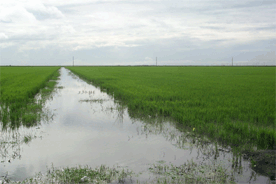 |
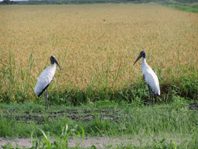 |
| Rice field with ditch showing field and open water microhabitat. The rice was planted within the past month | Wood storks (Mycteria americana) in mature rice |
Results
- Forty-three species
- Eight species breeding
- Species richness per field ranged from 12 to 28 species
- Shorebirds and wading birds spent the majority of their time foraging, while waterfowl foraged and lounged almost equally.
- Wading birds and waterfowl were observed most frequently in open water whereas shorebirds were seen most frequently in non-flooded vegetation.
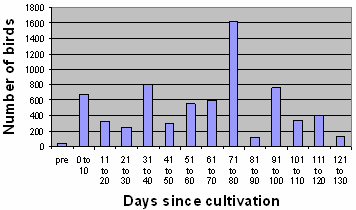
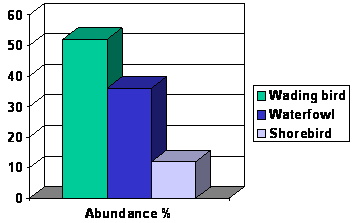 |
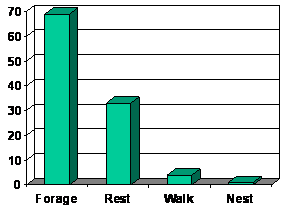 |
| Abundance of birds in each guild | Bird behavior for all guilds combined |
Acknowledgements
Funding for this project was provided by the Everglades Protection District.
Citation
Townsend, S.E., E.V. Pearlstine, F.J. Mazzotti, M.L. Casler, W.M. Bear and C.W. Deren. (2003, April). Wading birds, shorebirds, and waterfowl in rice fields of the Everglades Agricultural Area. Talk presented at the Greater Everglades Ecosystem Restoration Conference.
More About This Project
Ecology and Management of Wildlife in the Everglades Agricultural Area




